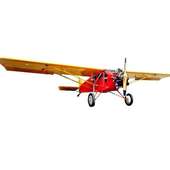- Presidential Scholars Program combats Nebraska’s brain drain (11/26/24)
- Why ‘Impoundment’ matters (11/22/24)
- Time for reform to ensure future of Social Security (11/21/24)
- A standing ovation for ‘Elf the Musical’ (11/19/24)
- AI’s influence on the 2024 election – not as damaging as feared (11/15/24)
- Tackling childhood obesity in rural Nebraska: A long-awaited solution (11/14/24)
- Polls aren’t perfect, but they help us listen—and act (11/8/24)
Editorial
Gardeners get permission to push the seasons just a little
Thursday, January 26, 2012
While many may question the reality of global warming, they haven't checked with their tomato plants.
McCook's "Nebraska's Hot Spot" motto is even more true now, according to the U.S. Department of Agriculture's color-coded hardiness zone map, which puts McCook squarely in zone 5b, meaning an average maximum low of -10 or -15, up about 5 degrees from the old map, issued in 1990.
Introducing it Wednesday, a USDA spokeswoman tried to distance the new map from the global warming argument, saying that while much of the country is in a warmer zone, the map isn't an appropriate measurement, since it is based on just the coldest days of the year.
The Arbor Day Foundation, which issued its own, updated map in 2006, agrees with the idea that climate change is having an effect on the family garden.
"We got a lot of comments that the 1990 map wasn't accurate anymore," said Woodrow Nelson, an Arbor Day Foundation vice president. His home in Lincoln used to be a "solid 4," he told the Associated Press. Now Lincoln, like McCook, is a 5b, and he's growing Japanese maples and Fraser firs in his yard, trees that shouldn't survive.
The 1990 map was based on temperatures from 1974-1986, and the new map on data from 1976-2005. The nation's average temperature from 1976 to 2005 was two-thirds of a degree higher than it was during the old time period, according to the National Climatic Data Center.
"It is great that the federal government is catching up with what the plants themselves have known for years now: The globe is warming and it is greatly influencing plants (and animals)," said Stanford University biology professor Terry Root in an e-mail to the AP.
Don't look for the new maps on your seed packets this year, they came out too late.
Many customers already know what they can grow in their own climate, and how much it has warmed, said George Ball, chairman and CEO of W. Atlee Burpee. "Climate change, which has been in the air for a long time, is not big news to gardeners," he said.
So, thanks to the USDA, it looks like, when we're perusing the seed catalogues this month, we have permission to push the seasons just a little.
Check out the new map at: http://planthardiness.ars.usda.gov/PHZMWeb/Downloads.aspx

